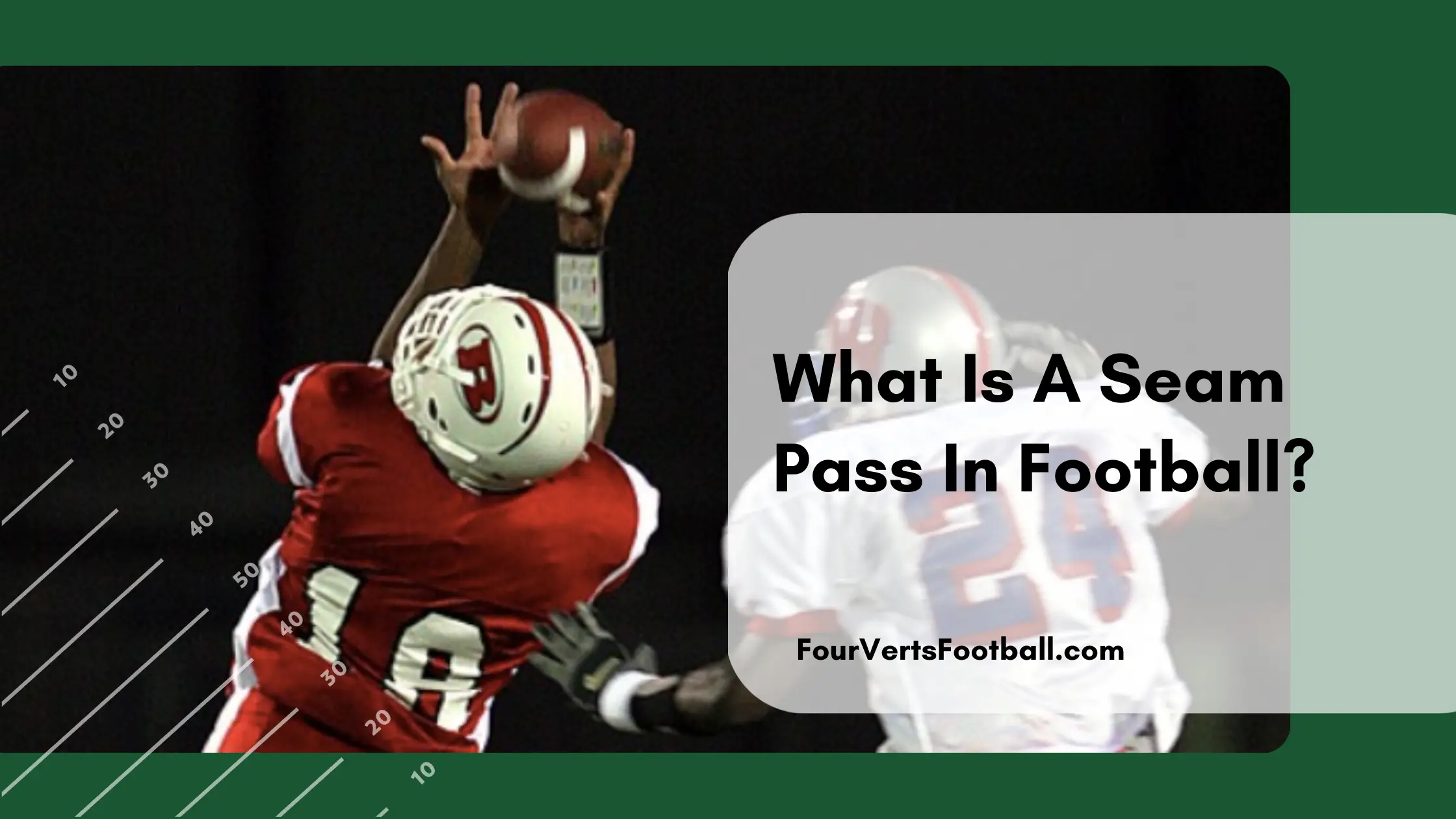A seam pass in football is a forward pass thrown by the quarterback to a receiver in the seam. In most cases, this pass is going to travel fifteen to twenty yards and is usually thrown shortly after the play begins.
A seam pass is usually thrown in between multiple defenders often making the receiver look wide open as the defenders are passing him off from one to another.
Seams passes must be thrown into a safe window or they can often turn into hospital passes for the receiver.
What Is The Seam?
The seam in football refers to the area down the field straight out from either side of the formation. In other words, if a player on the end of the formation runs in a straight line down the field he will run through the seam.
The seam is usually a spot on the field between coverages. If a team is in a zone defense their players are going to have a certain area of the field to protect.
The seam is an area that is often left unprotected. In most cases, a player in the seam is going to be underneath the safety coverage but overtop of the linebacker coverage.
How Do You Run A Seam Route?
Running a seam route is one of the easiest tasks that a receiver can have. To run this route you simply run a go/fly route from the slot or the edge of the formation.
If there is a defender in front of you playing press, you want to beat him quickly in order to start your route.
A seam route is often thrown very quickly. The receiver will run straight ahead down the seam and will receive the pass before he reaches the safety at the second level.
This play develops very fast, but if done correctly can result in a huge gain for a fairly easy catch and throw.
A seam route is a fairly basic passing pattern in football this play does not involve trickery like a bounce pass.
Which Positions Usually Run This Play?
In most cases, the positions that are going to run seam routes are slot receivers and tight ends. The reason these positions run this route is due to where they line up on the field.
If a wide receiver runs a fly route he will have the cornerback on him for the majority of the throw. Players starting their route in the middle of the field, on the other hand, are going to have some space to start their route.
The linebackers need to give up on their short pass coverage faster than a cornerback would on the outside. This allows players like a tight end or slot receiver to get that separation between the linebackers and the safety.
That concludes our breakdown of the seam pass learn more about some other passes such as a low arching bullet pass or the slower moving touch pass.

